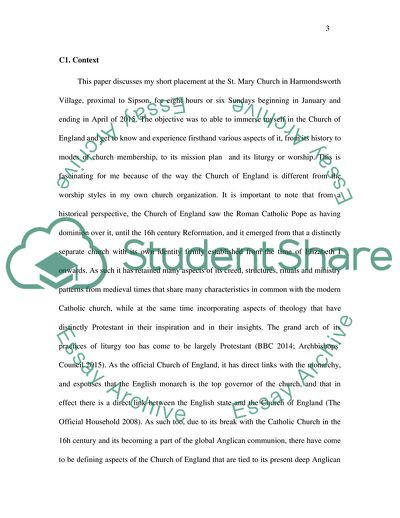Cite this document
(Placement at the St. Mary Church in Harmondsworth Village Essay Example | Topics and Well Written Essays - 3000 words, n.d.)
Placement at the St. Mary Church in Harmondsworth Village Essay Example | Topics and Well Written Essays - 3000 words. https://studentshare.org/religion-and-theology/1873337-short-placement-for-8hours-at-st-marys-virgin-harmondsworth
Placement at the St. Mary Church in Harmondsworth Village Essay Example | Topics and Well Written Essays - 3000 words. https://studentshare.org/religion-and-theology/1873337-short-placement-for-8hours-at-st-marys-virgin-harmondsworth
(Placement at the St. Mary Church in Harmondsworth Village Essay Example | Topics and Well Written Essays - 3000 Words)
Placement at the St. Mary Church in Harmondsworth Village Essay Example | Topics and Well Written Essays - 3000 Words. https://studentshare.org/religion-and-theology/1873337-short-placement-for-8hours-at-st-marys-virgin-harmondsworth.
Placement at the St. Mary Church in Harmondsworth Village Essay Example | Topics and Well Written Essays - 3000 Words. https://studentshare.org/religion-and-theology/1873337-short-placement-for-8hours-at-st-marys-virgin-harmondsworth.
“Placement at the St. Mary Church in Harmondsworth Village Essay Example | Topics and Well Written Essays - 3000 Words”. https://studentshare.org/religion-and-theology/1873337-short-placement-for-8hours-at-st-marys-virgin-harmondsworth.


